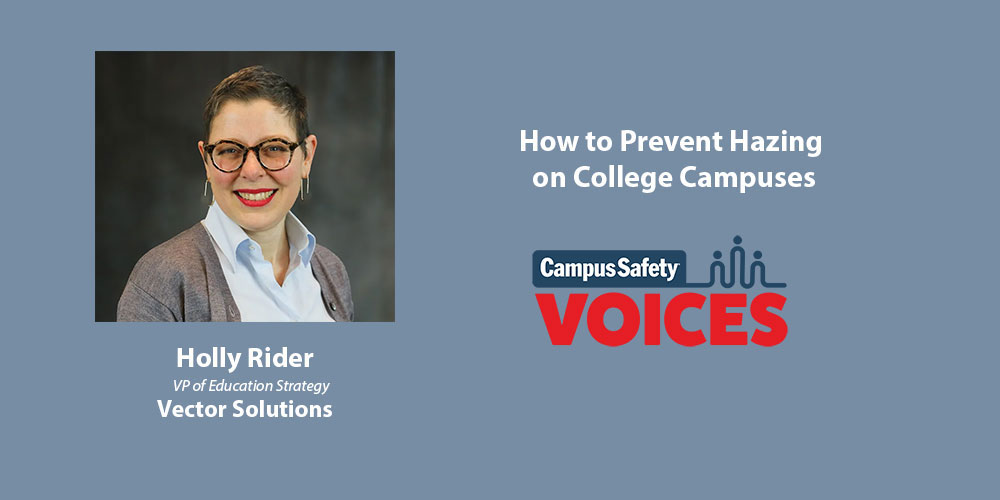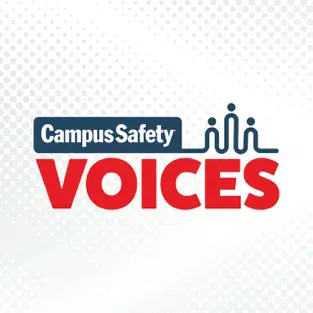Hazing involves any activity expected of someone joining a group that humiliates, degrades, abuses, or endangers them regardless of their willingness to participate. Common examples include forced physical activity or alcohol consumption, personal servitude, and verbal harassment.
When most think of hazing, they likely picture college students who are looking to join or have recently joined fraternities, sororities, or athletic teams. And while hazing does happen all too often within these organizations, it can occur in all organizations with social hierarchies.
“If we’re only focusing on those groups that may have the most publicity around hazing, we’re going to be missing a lot,” Holly Rider, Vice President of Education Strategy at Vector Solutions, said during an interview with Campus Safety. “The truth of the matter is, we actually don’t have as much information as we should about the ways in which hazing is impacting our campus communities because there is not enough data on this issue. What we do know from the data that has been gathered is that it is endemic and there is an opportunity to prevent the harms of hazing if we decide to invest in that.”
One study estimates 55% of college students involved in campus organizations experience hazing. Another study says there has been at least one university hazing death each year from 1969 to 2021. Additionally, over 200 college hazing deaths have occurred since 1838 with 40 deaths between 2007 and 2017 alone. More commonly, students are experiencing psychological effects from hazing (6:06). Rider says 40% of students report suffering significant negative consequences due to hazing, including feelings of isolation, sleeplessness, weight loss or weight gain, and negative academic consequences.
“When you’re placed in a position where your ability to belong is contingent upon enacting a set of behaviors that you may not desire to do or that might feel wrong to you, has its own negative consequences,” warned Rider. “That can carry through for a long time for students.”
How Colleges Can Mitigate Hazing
One way to mitigate hazing, says Rider, is to take a public health approach that seeks to teach all students, faculty, and staff involved in student organizations how to recognize potential hazing, how to intervene early, where to report it, and how to create safe ways to welcome new members that elicit feelings of belonging, tradition, and pride (28:08).
“What we want to do is train [them] in noticing the low-level situations of hazing behavior — as well as those extreme levels — so that they can notice it at the lowest level possible where the least amount of harm has happened. Then they have to decide, ‘Gosh, I’m seeing it and I know that it’s a problem that I have a responsibility to address,'” Rider described. “So noticing it interpreting as a problem, [and] deciding that you have an individual responsibility to act. This is the place where oftentimes our best intentions fall into the gaps because we may notice it, we may see it as a problem, but not feel as though it’s our problem to solve. We have to reinforce that every person has a role to play in preventing hazing. If you see something, you do have a responsibility to take some kind of action.”
As hazing becomes a growing problem, more states are enacting legislation that requires public colleges and universities to implement this type of training. Many of these laws also carry harsher punishments for hazing participation or failing to report hazing. States that have enacted such laws include Ohio, New Jersey, Georgia, Oregon, Florida, Louisiana, and Pennsylvania. Bills are currently pending in Indiana and New York.
Many anti-hazing trainings have similar messaging to other common first-year required courses which helps make it beneficial to all students — not just those who are part of a campus organization.
“For example, there’s sexual assault prevention training, and there is an overlap between sexual assault prevention and hazing prevention. Those skills related to consent — what is consent? What is coerced consent and is that valid? The answer, of course, is no, it’s not valid,” said Rider. “In terms of hazing prevention, we want to deliver specific training around hazing prevention and reinforce it across all of the areas which hazing impacts, which are mental well-being, sexual assault prevention, alcohol misuse prevention, and diversity and inclusion. All of these are areas that are also impacted by hazing, so we can have a duplicating or reinforcing messaging across each of these areas.”
Another way colleges can allay hazing is by gathering data about the experiences of students to allow each campus to build its hazing prevention strategies around information that is institution-specific. Those are the campuses, Rider said, that are most likely to see reductions in hazing.
“Hazing prevention should not just sit with the dean of students. It should not just sit with the campus safety officials. It should not just sit with, for example, fraternity and sorority life,” Rider continued. “It really needs to be a whole campus approach because each member of that campus is going to bring a unique vision and a unique set of information to the table to really help create that comprehensive hazing prevention strategy.”
Other topics discussed in this interview include:
- How the pandemic has impacted hazing (7:43)
- The role of social media in hazing, including “RushTok” (19:09)
- What parents can do to help keep their children safe at college (30:54)
Watch the full interview here or listen on the go on Apple or Spotify.









